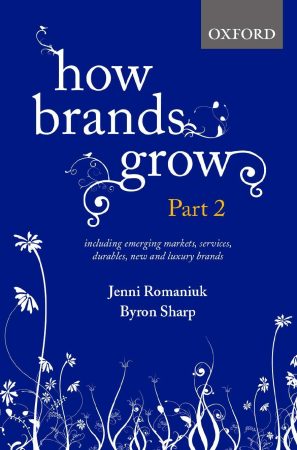When you work on a brand, you live and breathe it every day. Its existence pays your bills and puts food on your table, and you learn so much about it that, in memory terms, you look like the heaviest of buyers — with dense networks of brand memories that are easily retrievable anytime, anywhere.
It’s also then easy to assume everyone else thinks the same way and lose touch with the thoughts and feelings of typical buyers, without even really knowing it. This can then lead you to (unconsciously) approve marketing activities that speak to the experienced, heavy buyers, but are incomprehensible to the new buyers, often inexperienced in the brand and possibly the category, that you need to attract to grow.
Here are some steps you can take to shake out of that heavy brand buyer mindset and see the world through the eyes of most and most useful category buyers.
(Really) Define your typical buyer
Most brand managers have a target market for their brand, defined by some personal characteristics. Historically these have been gender and age, but over time other characteristics have been adopted to ‘flesh out’ the picture of who is buying your brand.
Instead of a target market, define your typical (or most common) brand buyer. Then once you have done that, look at how many sales come from outside your brand’s typical buyer… and then decide to stop trying to use characteristics to define your brand’s buyers and instead embrace the heterogeneity that is your current customer base, and your future customer base. It’s only when you accept the diversity of your brand’s customer base can you plan to increase it.
Remember, even for B2B or very frequently bought categories, any category is only a small part of people’s lives, and any brand an even smaller part within that. While this realisation reminds us of the diminished importance of the brand to the buyer, it amplifies the importance of marketing activity about the brand to the buyer.
Realise that sometimes timing is everything

How much convincing do category buyers need to buy your brand? Turns out often it is not much. We profiled new buyers of a brand in How Brands Grow Part 2,and it turns out they just look like existing light brand buyers. Most of the time we don’t need a 10-page spiel on the benefits of buying a brand, we just need a bit of useful information to be salient at the right time. This means we need to think less about ‘drivers’ of buying, which imply a certainty that really doesn’t exist, and more about ‘odds of buying’ and about how we increase the probability that our brand will be thought of in buying situations — to give it a chance of being bought.
Watch your ads as if you are watching a co-worker’s boring holiday video
Stop paying attention to your brand’s own marketing material. Instead, pretend Derek from accounting has bailed you up in the coffee room and wants to (a) tell you about his latest dream (b) show you pictures of his baby or (c) a video of their last boring holiday — whatever interests you least. Then with that mindset watch your brand’s ads and see what you take away. That will give you a sense of what most people are experiencing when they see your ads, and what they are likely to remember. Is what they remember likely to be useful next time they are in a buying situation?
Shop from a supermarket category you have never bought before
Go buy something from a new supermarket category, one you don’t shop from. To up the ante for the challenge, buy something for someone else from a category that is new to you — this puts pressure on you to make a good decision. Anyway, look at all the options, and try to work out how to choose between them. Set a timer and try to do this in 12 seconds without just randomly picking anything. When that fails, then record how long it takes you to make a decision you are happy with. The answer is it takes too long, but next time it will be quite a bit shorter. While this time you had little or no knowledge from your memory, next time you will remember a bit more and that will make the choice a bit easier. Thank you, memory.
Note: 12 seconds is the average time it takes from arrival to a category to putting an option in a basket from Dickson and Sawyers’ seminal study. A similar time was also found for online shopping by Anesbury et al. If you want to make the task even harder, buy from an online grocery store for someone else in a category you have never bought before.
Buy from a non-supermarket category for the first time
It’s fun, but humbling, to be a novice — to start from scratch in a category where you don’t even know where to buy a product, let alone brands. My last experience of this was buying K-beauty in Seoul. I didn’t know the brands, retailers, products or prices. It took me three days to buy something, and my first purchase was only because my lovely niece told me I would like that product (yes, I also asked my nearest Gen Zer to help me). I highly recommend you take the time, particularly if you are in a new or growing category, to remember what it was like to know very little about a category. What did you find helpful? What was difficult to understand? Using this knowledge will generate more effective marketing efforts and make you more circumspect in your communication goals.
Featured image: cottonbro studios / Pexels
Key references:
- Romaniuk, Jenni and Byron Sharp (2021), “New Brands and New Buyers of Brands,” in How Brands Grow: Part 2, Jennifer Butler, ed. 2nd ed. Victoria, Australia: Oxford University Press.
- Dickson, Peter R and Alan G Sawyer (1990), “The price knowledge and search of supermarket shoppers,” Journal of Marketing, 54 (3), 42-53.
- Anesbury, Zachary, Magda Nenycz‐Thiel, John Dawes, and Rachel Kennedy (2016), “How do shoppers behave online? An observational study of online grocery shopping,” Journal of Consumer Behaviour, 15 (3), 261-70.

